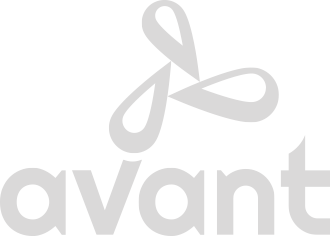Some of my most rewarding work has been with small and mid-sized companies. While Avant partners with global organizations, the impact of our work is more readily visible in mid-size companies.
Unfortunately, mid-size organizations often face development deserts. Specifically, while company leaders understand the value of talent development and have an appetite for supporting growth, they also have very real constraints. Often, they don’t have the budget, capacity, internal competencies, structure or experience to develop a scalable solution that will stick.
You end up with a company that can’t quench its thirst for development and, therefore, goes without.
I’ve also seen good companies that try but fall into traps along the way.
Development Traps to Avoid
Here are the five common traps.
Trap 1: Perfection
Sometimes leaders get stuck on “doing it the right way.” I would suggest that they just “do it” in some way. Employees tend to be more tolerant and patient with managers who are trying to invest in them. Getting over the hurdle of having to be perfect is a crucial first step. I recently worked with a plant manager who realized he was not having coaching conversations because he had a preconceived notion that a perfect meeting was 30 – 60 minutes. While this may seem minor to the reader, it was a significant sticking point for this manager as he wanted to be well prepared, set up the ideal environment and have the “right” message. He changed his framework to be more of a “sound bite” delivery that was actualized in a 3-minute approach; a la Kenneth Blanchard philosophy. In just 180 seconds, he was making incremental investments that, over time, yielded the outcomes he wanted for his team and the site.
Trap 2: Seminar Solutions
There are many valid reasons why folks head off to seminars. Sometimes it is a nice reward provided by a manager – e.g., a seminar that is relevant to the learner’s needs and is in an excellent location. The challenge is that the long-term learning outcomes are often not there unless the company and direct leader make a concerted effort to apply that knowledge within their culture and processes. An example of success is a Fortune 100 company I worked with that leveraged Spin Selling seminars and then adjusted their internal practices to weave in the knowledge and skills taught by the seminar. In this way, the program drove internal changes that significantly increased the adoption of the approach thus harvesting the best long-term learning outcomes. However, this is rare. More commonly, the seminar is insightful but knowledge/skills fade as soon as the class ends. Remember that adult learning is typically optimized by doing. That is why we commonly see the 70:20:10 rule applied in learning and development.
These numbers break down as follows:
- On-the-job experience learning (70%)
- Coaching/mentoring inside of the company (20%)
- Formal seminars/education (10%)
Trap 3: Delegating Development
While I see less of this today, I still hear and uncover artifacts of “people development is HR’s job.” In reality, the best talent developers are those leaders who see themselves as a key agent for talent development. It is often evident to employees if their manager cares about their development. Those managers assign projects with the specific intent of developing a direct report; be that gaining insight into a new aspect of the business, working with a cross-functional team he/she might not naturally partner with in day-to-day responsibilities, or having exposure to senior leaders sponsoring the project. Best-in-class leaders do not delegate development, they are developing talent in their organization while also maintaining external relationships to have a “virtual bench” of talent.
Trap 4: Unchecked Performance
If your company is starting or reviving its employee development activities, don’t begin with those who have known performance issues. Those are the employees who exit the organization. Those departures can sully the reputation of the manager sponsoring the employee(s), cloud future development programs, and negatively impact company culture. This only needs to happen once at a company for employees to begin to believe that participation in “ACME’s Leadership Institute” (or name of internal development program) is a veiled method of dealing with performance issues. You want employees excited and fully engaged in your development activities. Be very clear about the criteria required to participate in the program; this includes an overtly stated criterion that excludes those with chronic performance issues.
Trap 5: Complex Assessment Tools
If you are getting started in the employee development arena, it is essential to keep things simple – process, model, application. Simplicity makes it easy for people to adopt and apply knowledge into real change. While feedback is an important step to development, it should motivate real change. Too many times, I see people chase a number rather than have a robust conversation about what is going on. Or, they get stuck on “what good looks like” – meaning my “5” (on a 5-point scale) may be defined differently than my manager’s “5.” This can be distracting and deflating. I cannot tell you how many times I see highly complex competency models, 360 tools that segment data until it is sand, or survey processes that take hours to complete and months to get back to the learner. So, when you decide to use an assessment tool, make sure it fits where you are at, will drive ideal behavior (of sponsors and learners), and above all else, is easy to understand. Complexity can quickly squash the momentum of organizations getting started.
Development Tool Options: Avoiding the traps
Wherever your company is on its employee development journey, be sure to avoid common traps. Getting started and demonstrating desire to invest in your people is significant. Waiting to "perfect" a program or a lengthy conversation can get in the way of progress. In fact, it is through making mistakes that we learn - so grant yourself permission to be imperfect. When using seminars be sure to have strong connections into your team and day-to-day work so you can make the knowledge and skills "stick". Of course, we all know that development is everyone's job, including the employees themselves. Be clear about the criteria to participate in a program. Make the process and tools simple to maintain focus and gain traction. Finally, as previously mentioned, complexity can quickly squash the momentum of organizations getting started - be sure to keep things as simple as possible.
In 2015, after years of hearing the same thing over and over again, I began laying out the framework for a development tool – a tool specifically geared to overcome the obstacles (or traps) that small and mid-sized companies face in talent development.
I knew that whatever I created, it had to be:
- Quick and easy to implement
- Cost effective
- Intuitive to use
- Actionable (development plan)
- Focused on behavioral frequency
My concept evolved into DEAL – Developing Employees as Leaders
Avoiding the Traps: DEAL
- Trap 1 / Perfection: Companies can get stuck on needing their own competency model. DEAL gives a foundational model that is agnostic of company culture. DEAL empowers the employee and manager to identify and customize development priorities.
- Trap 2 / Seminar Solutions: DEAL report converts into an action plan which means you can leverage your workday to make developmental gains (i.e., on-the-job experience). What better place to enhance your ability to communicate or build collaborative relationships?
- Trap 3 / Delegating Development: DEAL puts the keys of development directly into the learner’s hands. It creates a positive psychological contract between the learner and manager.
- Trap 4 / Unchecked Performance: DEAL has a readiness checklist that allows an organization to avoid falling into the trap of “Unchecked Performance.”
- Trap 5 / Complex Assessment Tools: DEAL was built to cut through complexity. Moreover, the frequency scale pivots discussions away from “a number” and drives a meaningful growth conversation.

